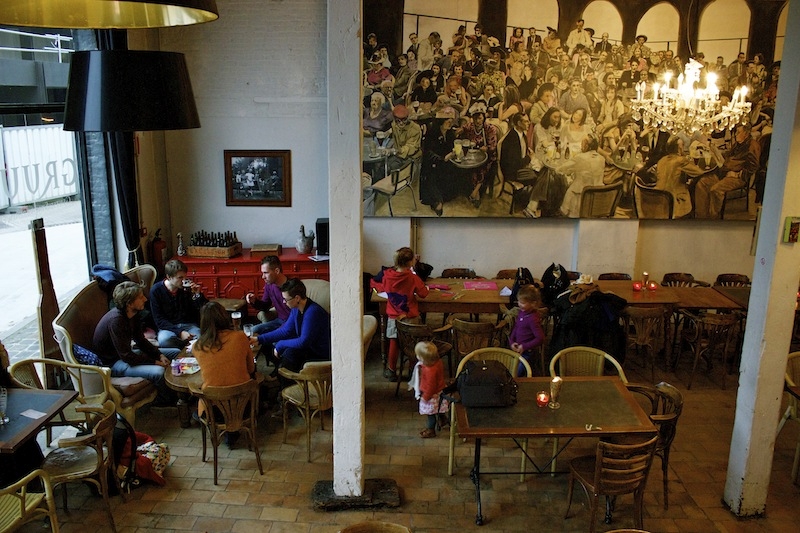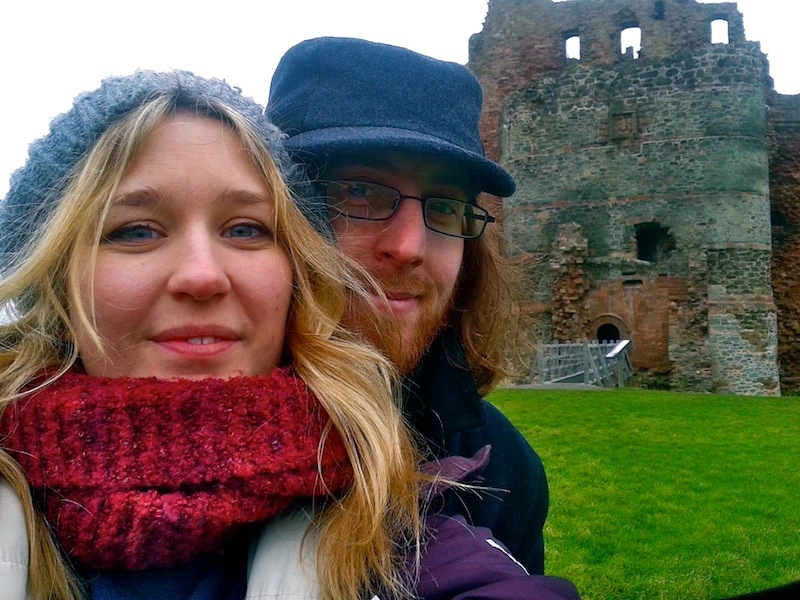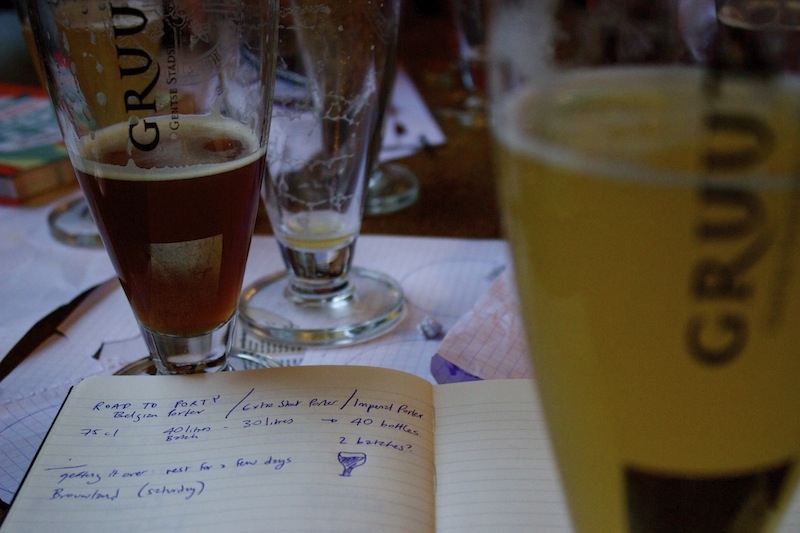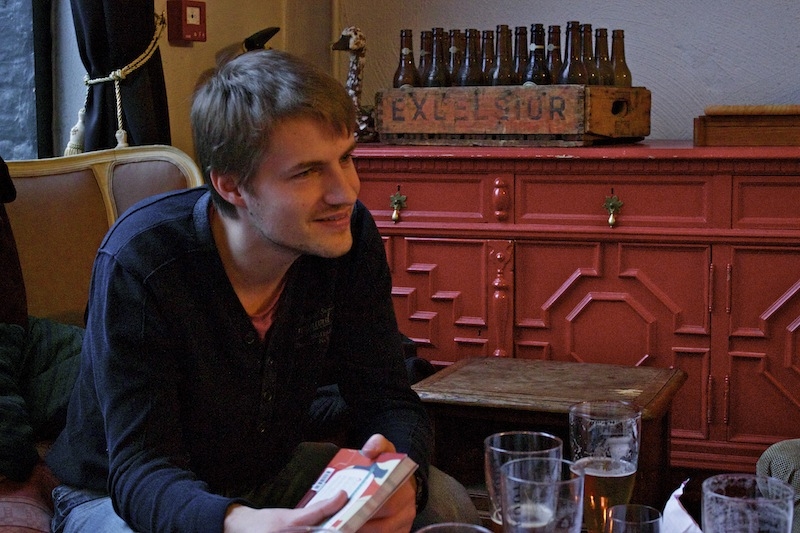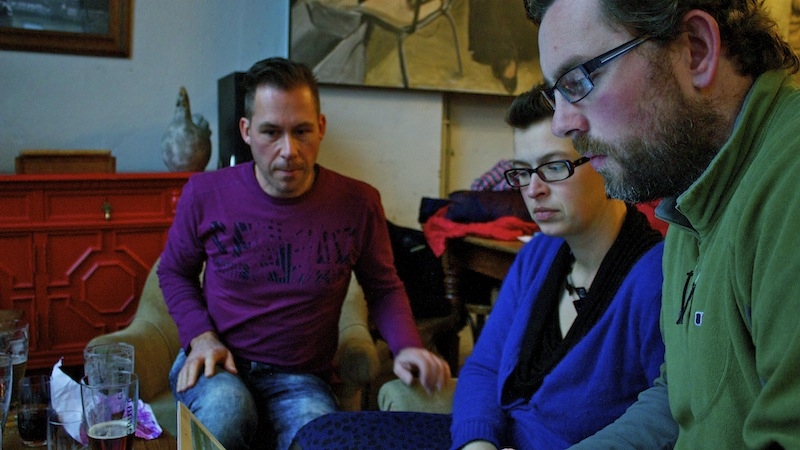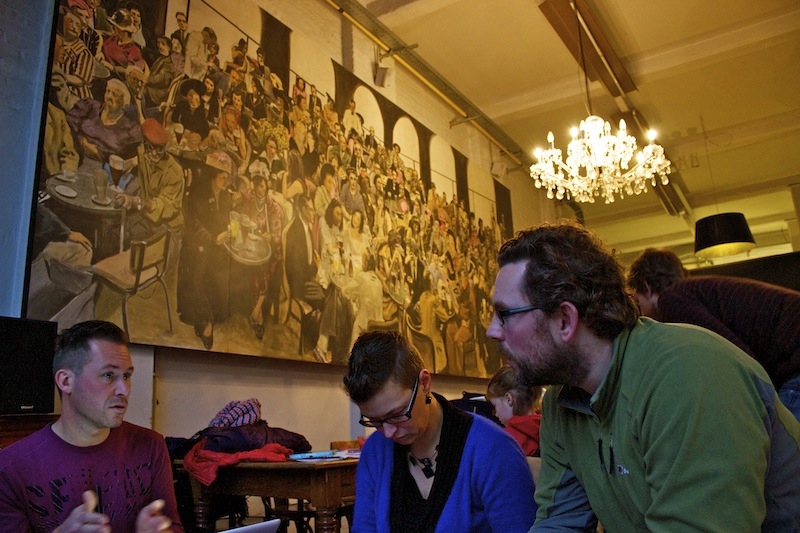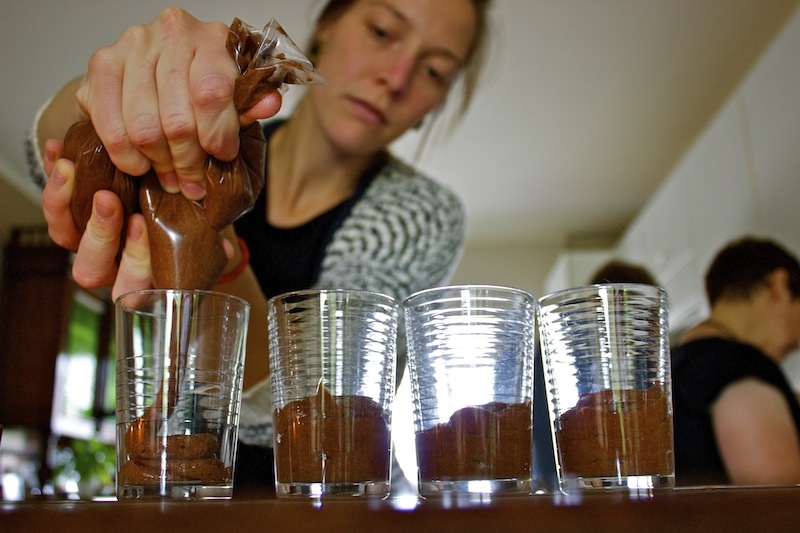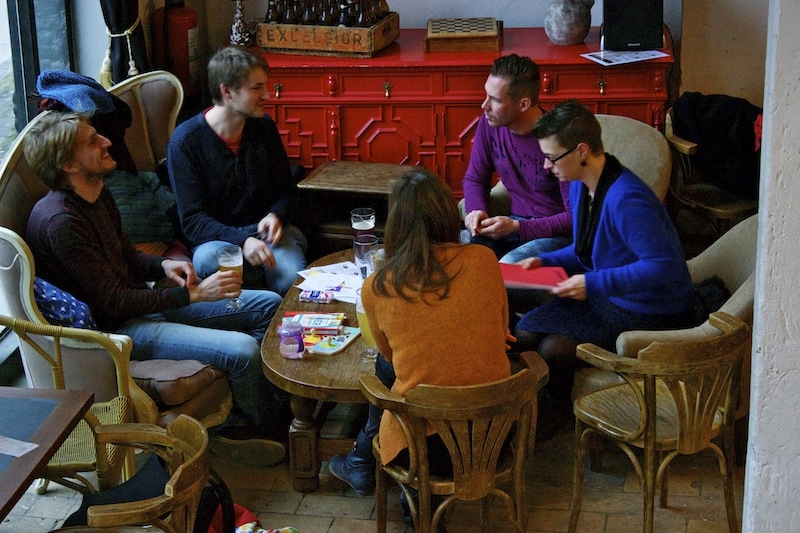My brother Mike announced his engagement to his girlfriend Fiona recently. We got some people together in a small city brewpub in Ghent to design a special beer and chocolate for their wedding.
NAMING THE PROJECT | ROAD TO PORTY
Mike moved from Ireland to Scotland 14 years ago to study at Edinburgh University and has stayed there to this day.
Meeting Fiona has taken Mike to Portobello, or ‘Porty’ as it’s known locally, a beachside community on the suburbs of Scotland’s capital where Fiona grew up. It is in ‘Porty’ where they will be getting married next September.
Mike is a professional musician. His projects include the Wednesday night shape-shifting soul-funk monster ‘the Katet’, the film and arts project ‘Tourist Walk’, the ‘Tinderbox Orchestra’ and the ‘Blursday Thursday’ sessions in the Dalriada, but he also writes solo numbers, one of which is a emotive folk ballad about his journey to Edinburgh where Fiona’s family and the ‘Porty’ community have welcomed him so warmly.
So, the beer and chocolates that we are going to create for Mike and Fiona’s wedding will be called ‘Road to Porty’.
This song will be the soundtrack to the project.
WHAT BEER STYLE TO BREW?
Why choose ‘Belgian Porter’ as the style?
Because of the name.
The Road to Porty just has to be a porter, right?
We thought about brewing a ‘Belgian Golden Strong Ale’ (think Duvel) or a Belgian Tripel (think Westmalle), something with full flavour and a distinctive yeast profile.
But when we kept saying the name of the beer out loud – ‘Road to Porty’ – we couldn’t get away from the fact that we were going to make a porter style beer.
With unanimous agreement, the decision was made for the following reasons:
→ The name Road to Porty lends itself to being a porter.
→ Porter has a rich history in Ireland and lends some context for an Irishman getting hitched.
→ The dark malt character of a porter gives us good opportunity to create strong pairings with chocolate.
→ The open nature of this style (full spectrum sweet to bitter, malt forward to hopped) gives us the option of incorporating bespoke Irish and Scottish ingredients to symbolise the ‘marriage’ of families from these two countries, with the Belgians lending an element of sophistication to this special event.
→ It’s a wonderfully history-rich and delicious beer style.
If you’d like to keep up-to-date with the development of this project, sign up for our free email updates:
WHAT THE HELL IS A ‘PORTER’?
There is often some confusion about what exactly a porter is. It’s widely perceived to be a brown or dark beer named for its popularity in late 18th century London among street porters and the working classes. Beer historian, Martyn Cornell, writes in great detail about its history, and Boak and Bailey’s ‘Porter Series’, a project in which they taste their way to their favourite porter, covers its taste profile among several commercial examples.
So what’s a ‘Stout’? It’s a dark beer too, right? What’s the difference between a ‘stout’ and a ‘porter’? Originally, ‘stouts’ were stronger or ‘stouter’ versions of beers, including paler beers, so what was initially the ‘Stout Porter’ over time lost the ‘Porter’ in its name and was referred to simply as ‘Stout’.
Today’s porters and stouts are not dissimilar in alcohol content (although it is often perceived that porters are weaker), but a trend seems to have developed for porters to use brown malts in their grain bill while stouts instead make use of larger proportions of pale malt with small additions of roasted barley (i.e. roasted and not malted barley grain).
Another Beer Historian, Lisa Grimm, makes the excellent point that the terms ‘porter’ and ‘stout’ seem to be interchangeable and that the style guidelines are just that – guidelines:
The explosion (or rebirth) of a variety of sub-styles of both porter (at least in the US, just about any dark beer may qualify) and stout (milk stout, dry Irish stout, oatmeal stout and so forth) may actually have served to remind drinkers that in the end, the naming is just semantics; if it’s a good beer, brewers can categorize it any way they like, just as they did in the 18th century.
There are several different styles of porter listed in the internationally recognised ‘Beer Judge Certification Programme’ Style Guidelines. These include a Brown Porter, a Robust Porter and a Baltic Porter, the differences between each relating to varying degrees of roastiness in character, attenuation levels, fermentation methods and alcohol content.
WHAT THE HELL IS A ‘BELGIAN PORTER’?
So why will Road to Porty be a ‘Belgian Porter’ rather than any other style of Porter? Here’s a few reasons:
→ We will be brewing this beer in Belgium. It will be brewed by a team of 5 Belgians (and 1 Irishman). The bulk of the ingredients will be sourced in Belgium. It is a Belgian beer. It is a Belgian porter.
→ Road to Porty will take inspiration from the recipes of ‘Belgian Dark Strong Ales’ and what are sometimes referred to in brewing books as ‘Flemish Grand Cru’ beers.
→ We will follow the Belgian tendency to brew higher gravity beers. We’re aiming to end up at around 7% ABV which is generally at the very top end of the range associated with English and Irish porters.
Our next stop will be to go to Brouwland (Brewland) in Limburg (the Eastern part of Flanders) to source our ingredients and finalise a recipe.
THE ROAD TO PORTY CHOCOLATES
Elisa will be making Road to Porty chocolates and the idea at the minute is that these will:
→ Be an interesting and appropriate pairing with the Road to Porty beer;
→ Use ingredients also used in the making of the beer (perhaps from Ireland and Scotland); and
→ Be homemade and Belgian.
More to follow as the project progresses.
MEET THE BREWERS | THE ROAD TO PORTY TEAM
Team Road to Porty is made up of brothers Timon and Ben Spiesschaert (on the left of the picture above), and Franklin Verdonck and Kim Vanopdurp (on the right of the picture). Elisa has her back to us in the photo and I am the final member of our six-strong panel.
We all met on the ‘Algemene Bierkenner’ course at CVO Panta Rhei in Ghent. We’ve studied beer history and beer styles together and now we are going to brew together.
Franklin and Kim brew regularly. Ben and Timon are brothers who have brewed together and also with Franklin and Kim (an ‘Irish Red Ale’). Other people will contribute to the project as it develops, whether that’s in designing the bottle labels and chocolate packaging or in capturing the whole story on camera as we go.
If you’d like to keep up-to-date with developments on this project, do subscribe to free email updates by leaving your email address below.



